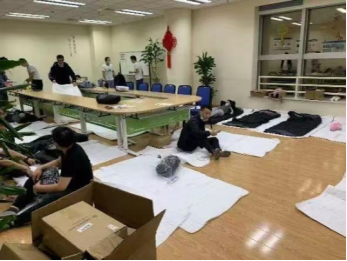By Li Panpan
Most of the semiconductor companies in Shanghai are managing to continue their operation despite the over-ten-day citywide lockdown with growing problems in social supplies, logistics, and transportation. Higher costs are the immediate impact of the situation.
Shanghai went into a citywide lockdown on March 28, prompted by a surge in the COVID cases. The drastic measure is affecting the city as the center of China’s semiconductor industry. Shanghai-based JW Insights analyst Lechuan is following the developments, and she interviewed some local semiconductor companies. Here are some excerpts from her reporting.
Since early March, Shanghai Zhangjiang Hi-Tech Park has increased pandemic control. Many semiconductor companies in the Park, especially design companies, have asked most employees to work from home, except for technical personnel who stay at the company with daily necessities.
For foundry, packaging, and testing companies that maintain 24-hour operations, they manage to stay in running. On March 28, foundries such as SMIC, Huahong Group, TSMC Songjiang Plant, and Wafer Works Shanghai Plant stated that they would comply with the local government control measures and keep their production going.
Huahong Group said that more than 6,000 personnel in its five factories in Shanghai are sticking to their posts to maintain production.

Image source: Huahong Group
Uninterrupted production needs a continuous supply of raw materials. Once the inventory is available for less than 40 hours, it is necessary to coordinate the procurement and transportation. As of March 24, the Shanghai IC Industry Association has cooperated with local authorities to apply for 101 passes, solving the transport of more than 500 tons of raw materials.
The Shanghai Lingang Management Committee said it would allocate resources for critical enterprises, like GTA Semiconductor(积塔半导体), to ensure regular production and maintain at least 80% of production capacity in the area.
For the packaging and testing giant, ASE(日月光) said the lockdown has not affected its production but expects that the cost of logistics and employee care will increase.
The head of a wafer testing factory told JW Insights that the raw materials are all in stock, and there is no problem in lockdown for a few days. The key is whether the goods such as wafers can be shipped into the factory regularly.
Semiconductor equipment is already in short supply, with the delivery time of some equipment being 12 months or more, affected by the pandemic, geopolitics, and global production expansion.
Advanced Micro(中微公司) said engineers involved in production have moved into the company before March 27th to ensure stable output while others worked at home. ACM(盛美半导体) said its Chuansha foundry keeps 24-hour closed production while other personnel works at home, so its production has not been significantly affected.
Although most of the staff can work at home, an insider from a Chinese semiconductor equipment listed company told JW Insights that some systems, such as the Product Data Management system, are with limited access and cannot be open to home users because of security risks.
Different EDA and other design software are used in semiconductor companies based on their needs. The PDM system transfers data files between various software and ensures the safe and effective sharing and use of data.
Another head of ATE equipment supplier said that their engineers need to go to clients’ sites to equip and test equipment, and they have to postpone amid the pandemic lockdown in Shanghai.
Average wages are not affected for employees, but bonuses may be discounted.
The current shortage of logistics capacity in Shanghai is severe, even in the transportation of daily necessities. Limited logistics is also the first bottleneck for the semiconductor industry. Control measures have caused hindered logistics, an enormous lack of workforce, and soaring costs.
With the spillover of the epidemic, the control of logistics in the Yangtze River Delta region is becoming stricter, resulting in a more significant shortage of logistics resources for transporting semiconductor materials.
In particular, many semiconductor materials are imported through Shanghai Customs, which is expected to be affected as pandemic control lasts longer.
An insider from a compound semiconductor project in neighboring Jiangsu Province said that the imported goods need to be parked at the site for six days for comprehensive sterilization before they can be dispatched, but there are no truck drivers to transport the products to go through the Shanghai Customs, and some employees were also unable to come to work due to community control or destination isolation requirements.
Many semiconductor companies are also actively taking on corporate social responsibilities despite facing operation difficulties. SMIC decided to donate RMB10 million ($1.57 million), VeriSilicon(芯原股份), and Sunna Technology donated 10,000 pieces of Sunna KN95 three-dimensional nanofiber masks to Shanghai Jiaotong University School of Biomedical Engineering; Metax Tech (沐曦集成电路) donated 200 sleeping bags to the local community, and Enflame Tech (燧原科技) donated 30 camp beds.
Shanghai’s lockdown has been extended until an unknown date as government officials review city-wide test results. JW Insights will continue to follow up on updates about the semiconductor supply chain in Shanghai amid pandemic control.


 登录
登录








